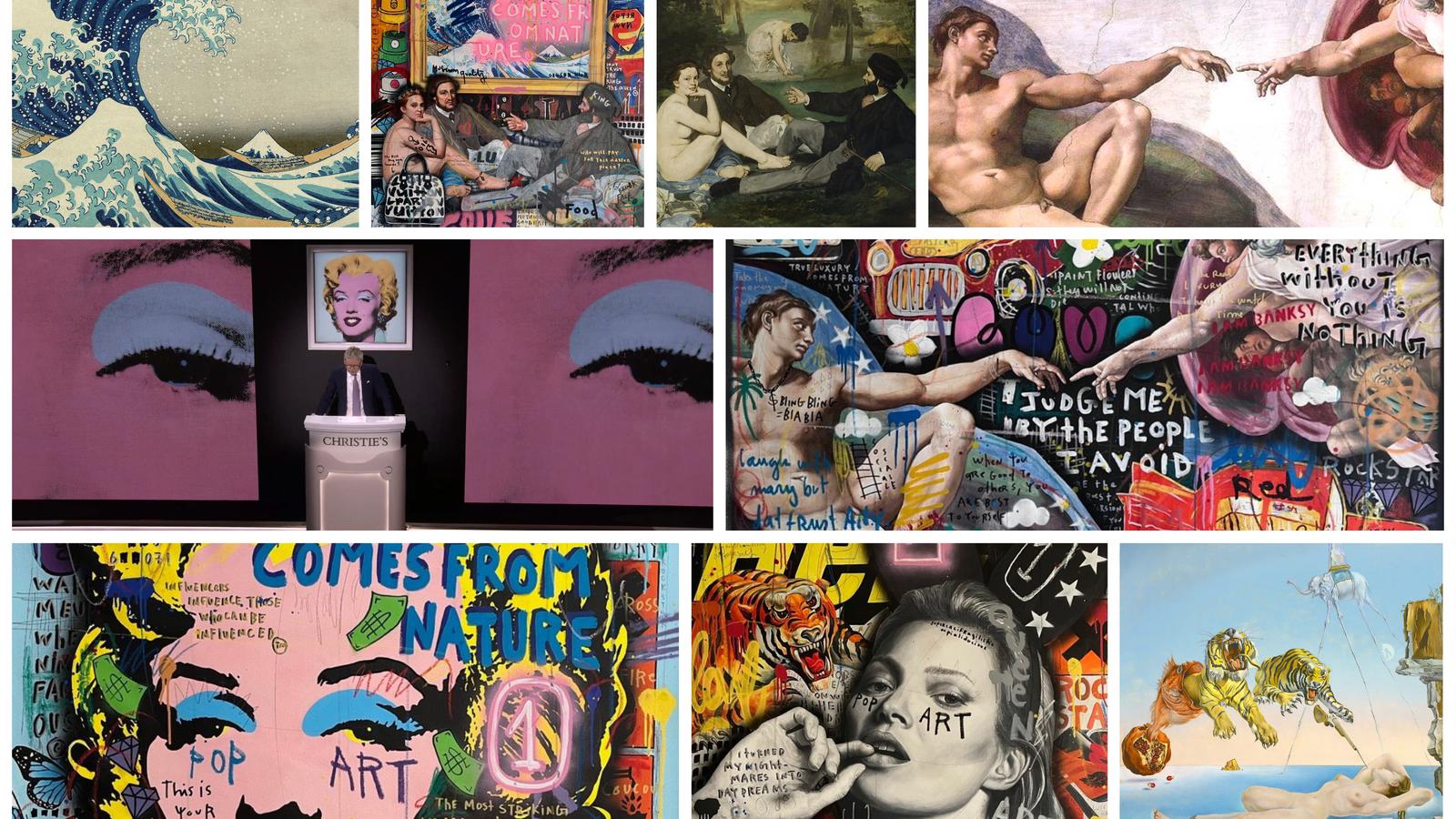With this writing we present you
a selection of artworks by
Jisbar
and share with
you some interesting facts about the artistic references that constitutes and
surrounds them. These details will be able to unveil a new and surprising
meaning behind Jisbar’s masterpieces.
The first
artwork we want to talk about is "
Blue Marilyn"
, and the obvious reference
is the famous portrait of the iconic movie star Marilyn Monroe made by
Andy
Warhol
. The curiosity about this work relates to the history of one of the
originals: on May 10th, 2022 it was sold for $195 million at Christie’s,
establishing a new record for any American artwork at auction. The winning bid
was placed by Larry Gagosian on behalf of a buyer of which name has not to be
released. All profits were donated to the Thomas and Doris Ammann Foundation in
Zürich.
The overall titleholder remains Leonardo da Vinci's $450 million "Salvador
Mudi", which Christie's sold to Saudi Arabia's
crown prince in 2017.
Warhol's 3-foot square silk-screen from 1964, called "
Shot Sage Blue
Marilyn
" depicts a promotional photo from the actress's 1953 film,
"
Niagara
". The artist, which realized the series ten years after the
death of the Hollywood star, transformed the actress into a pop-art icon by
giving her a bubblegum-pink face, ruby lips and a blue eye shadow set against a
sage-blue background.
Warhol created five silk-screens of the star in this particular
"Marilyn" series, each one has a different background such as red,
orange, blue, sage blue and turquoise.
The second artwork we mention is " Lunch at the Museum (red) " . This work takes inspirations from two big masterpieces: 神奈川沖浪裏 " Kanagawa okinami ura" , by the Japanese artist Katsushika Hokusai and " Le Déjeuner sur l'herbe " , by Édouard Manet .
The power of the work of Jisbar is to bring the viewer in a context of comfort, using very popular references. He then likes to create a new and often contradictory message through images, sentences and quotes that acquire a new meaning when in relation with the other elements of the painting.
Also Manet and Hokusai decided to surprise the viewer.
The painting "
Le Déjeuner sur l'herbe"
, for instance, represents an
everyday situation even though something looks to be “out of place”. In fact, a
naked woman’s body that is fully recognized subject in the artistic tradition,
but here assumes a totally different role and power being inserted in the
context of a conversation between two bourgeois men.
Hokusai in his artwork, which does not appear to be radically different from the tradition, decides to surprise his Japanese viewers comparing to the way they used to read images. He drew the wave in the act of moving from left to right, to give further dramatic emphasis to his work.
In all these three pieces the artists are then using strategems to communicate
something important for them and for their contemporary society.
The next piece
is
"
Car Creation
"
, where we find some evidences that, if we analyse them
carefully, they may unveil some secrets behind the composition of "
The
Creation of Adam
"
by
Michelangelo
.
We should know that prior to the masterpiece by the Renaissance master, God was always represented in a frontal position, wrapped by clouds and with the hand pitting downwards, as in the act of judging man. Here the Judgment is no longer the protagonist of the scene in favour of love and divine intellect.
Another particular we can notice from the work by Michelangelo is that the
angels around God are creating the shape of the human brain. The angels are
also called “Angelic Intelligences”.
What makes this representation very fascinating is that it embodies the inner
aspect of the sentence: “God created man in His own image, in the image of God
He created him”, therefore in the image of intelligence and love.
Now it will be the task of the viewers to discover which other messages from
Jisbar are hidden behind his reinterpretation.
The last
artwork is "
Rockstar Tiger Kate
"
, which takes inspiration from the
painting "
Dream Caused by the Flight of a Bee Around a Pomegranate a Second
Before Awakening
"
, by the Surrealistic artist Salvador Dalì. The second one
it was painted in 1944 and the dreaming woman is said to represent the wife of
the artist, Gala Éluard.
Dalì was inspired by the dream that Gala had when, intimidated by the buzz of a
bee flying by, she was awakened with a startling fear of being stung. The
artist tried to fix on the canvas this immediate and unexpected passage from
the world of dreams to reality.
While the woman is immersed in a naive sleep, it is in the background that the
dynamic action takes place. It is as if the woman marked a line of demarcation
between the dream world (to her right) and reality (in the foreground); she is
about to wake up, but Dali wanted to depict the immediately preceding moment,
and that’s why the wife’s face is facing the background, the dream.
- THE ART OF JISBAR AND ITS ARTISTIC REFERENCES - on the website https://www.artsy.net/
Jisbar's works featured in the article on the Sist'Art shop website:

